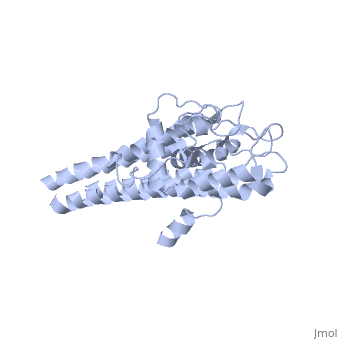User:Sara Christine Norkelun/Sandbox 1
From Proteopedia
| Line 44: | Line 44: | ||
'''Clinical Relevance''' | '''Clinical Relevance''' | ||
| + | ---- | ||
| + | |||
| + | VLsE is the basis of the C6 ELISA serological test for Lyme disease<ref name="Liang99">Liang FT, Steere AC, Marques AR, Johnson BJ, Miller JN, Philipp MT. 1999. Sensitive and specific serodiagnosis of Lyme disease by enzyme-linked immunosorbent assay with a peptide based on an immunodominant conserved region of Borrelia burgdorferi vlsE. J Clin Microbiol 37(12):3990-6.</ref>. | ||
| + | |||
| + | |||
ELISA test | ELISA test | ||
Picture from wiki entry on ELISA | Picture from wiki entry on ELISA | ||
Revision as of 01:15, 15 August 2012
VlsE
Vmp-like sequence, Expressed
|
Introduction
Lyme disease is a systemic bacterial infection that can lead to chronic dehabilitating effects if left untreated. The symptoms are varied and affect multiple systems, sometimes making diagnosis difficult. Some initial symptoms are not unique to Lyme disease, and include fever, headache, lethargy, and soreness. The main identifying symptom is a characteristic bullseye rash that develops locally near the site of infection. If the infection is allowed to progress, more serious symptoms develop such as arthritis, swollen joints, and even neurological symptoms such as depression and psychosis.
The disease is caused by the bacterium, Borellia burgdorferi, the spirochete responsible for most Lyme disease in most of the Eastern region of North America. Borellia b. has a complex life cycle, transferring from different hosts. However, the main vector of disease transmission to humans is the deer tick, Ixodes scapularis, particularly the young nymph stage.
The main challenge to treatment of the disease is the bacteria's lengthy incubation time. After the time of entry, weeks may pass before symptoms begin to emerge, many of which are indistinguishable from more common maladies such as a cold or fatigue. During these initial weeks, Borellia burgdorferi is able to evade immune response for reasons which are not completely understood. It appears that this allows the bacteria to spread systemically and effect sites distal to the infection site, such as the joints.
VlsE and Immune Evasion
The evasive nature of the pathogen Borrelia burgdorferi is believed to be due in part to its unique surface antigen, , or "Vmp-like sequence, Expressed". VlsE is a lipoprotein that is abundantly found on the membrane of the bacteria. It belongs to a class of proteins known as variable surface antigens, meaning that they are antigens located on the outer surface of the membrane, but are also of a variable nature. This unique variability is what is responsible for the proliferative nature of the bacteria in the human body, through its ability to evade immune recognition.
VlsE may serve other unkown functions, but there is support for its role in immune evasion. If Borellia b. looses the encoding plasmid Ip28-1, which is responsible for the production of VlsE, the result is a significantly reduced degree of infection in the mouse model[1]. This property is a result of the antigen's complex structure, which is comprised of a proximal region which is presumably embedded in the bacteria's membrane, and an exposed distal region. The distal exposed region is the area of most interest, because it is comprised of small alternating variable and invariable regions. While the invariable regions maintain a constant composition between generations of bacteria, the variable regions undergo a complex gene recombination mechanism which alters the variable regions between generations[2]. These rapid modifications in the variable regions may confer the bacteria with a kind of protection from immune recognition.
There is also an indication that the formation of in vivo may be responsible for some sheilding of the invariable regions at the connection between the two monomers[2]. This may help to further explain why the invariable regions are so inaccessable to antibodies.
Antibody Recognition
Structure
VlsE is composed of a variable domain flanked by two invariable domains. The invariable domain
Clinical Relevance
VLsE is the basis of the C6 ELISA serological test for Lyme disease[3].
ELISA test
Picture from wiki entry on ELISA
References
- ↑ Labandiera-Rey, M., Baker, E., and Skare, J. T. (2001) J. Infect. Immun. 446-455.
- ↑ 2.0 2.1 Eicken, C., Sharma, V., Klabunde, T., Lawrenz, M. B., Hardham, J. M., Norris, S. J., and Sacchettini, J. C. (2002) J. Bio. Chemistry 227:24 21691-21696.
- ↑ Liang FT, Steere AC, Marques AR, Johnson BJ, Miller JN, Philipp MT. 1999. Sensitive and specific serodiagnosis of Lyme disease by enzyme-linked immunosorbent assay with a peptide based on an immunodominant conserved region of Borrelia burgdorferi vlsE. J Clin Microbiol 37(12):3990-6.

